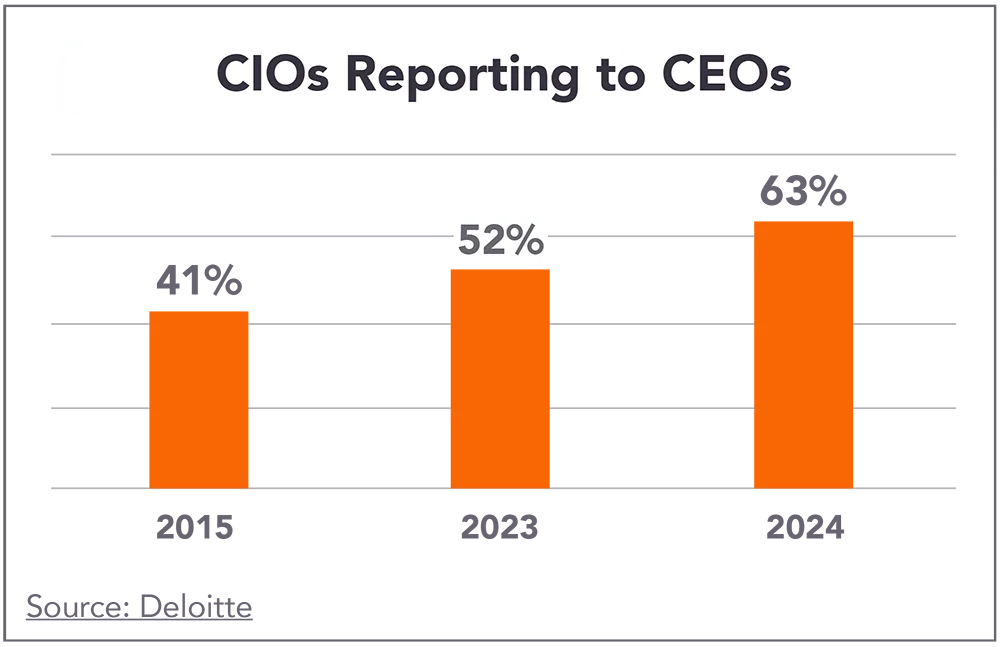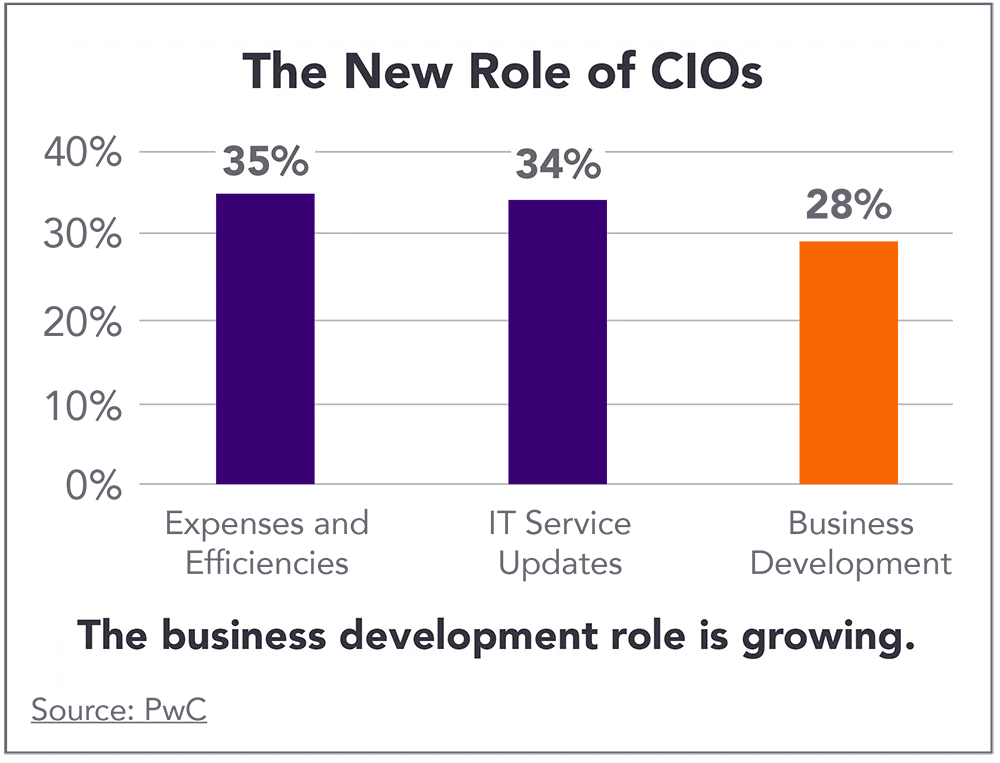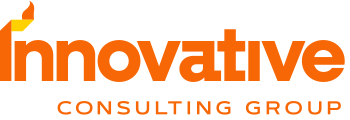Healthcare’s dependence on technology, and the potential revenue boosts from AI, have elevated the CIO from managing a cost center to now managing a revenue generator. With this change, many CIOs are now reporting to CEOs instead of CFOs.
The Wall Street Journal cited a Deloitte study where 63% of technology leaders now report directly to the CEO, an increase of 50% since 2015. The article attributes the change to artificial intelligence and its role as a profit driver.

How AI Growth Increases the Top Line
AI is generating revenue. In addition, AI is saving time, cutting costs, increasing procedures and boosting the bottom line while improving outcomes.
Here’s just one example from Mayo Clinic. Doctors treating a patient with polycystic kidney disease (PKD) must assess total kidney volume. While incredibly informative, this assessment involves analyzing dozens of kidney images, one slide after another—a laborious process that can take about 45 minutes per patient. With the innovations developed at the PKD Center at Mayo Clinic, researchers now use AI to automate the process, generating results in a matter of seconds.
This quickly translates to the bottom line: Specialists can see more patients!
“80% of business execs said the CIO is the key stakeholder in driving innovation.”
Deloitte
Other examples of AI as a revenue generator to hospitals:
- Increased claims recovery. AI-powered solutions streamline claims processing workflows, leading to faster adjudication and revenue streams.
- Faster personalized treatment plans. AI algorithms analyze patient data to develop personalized treatment plans based on medical history, genetic factors, and clinical guidelines, in seconds, yet generate the same revenue as if doctors did the work, without the cost of the physician’s time.
- More operating room revenue. According to Deloitte, hospitals are optimizing operating room blocks and seeing a 10% to 20% increase in utilization and revenue by leveraging AI predictive analytics to reduce operational waste and increase administrative efficiency.
Savings Also Add Up, and CEOs Are Noticing
A recent Johnson & Johnson study predicts that AI will also help the bottom line not just by increasing revenue but also by leading to savings of between 5% and 10% in healthcare spending, or roughly $200 to $360 billion a year, after the costs of AI implementation.
Johnson & Johnson also predicts that AI will continue to make inroads facilitating earlier detection of diseases, driving drug discoveries, enabling more targeted clinical trial recruitment, ensuring treatments can reach patients, and analyzing the operating room for efficiency and physician learning.
For example, surgical procedures are being videotaped and then fed into an AI algorithm to distill surgeon behaviors, tactics, and movements that lead to the highest success. Surgeons no longer have to wade through hours of tape to get the answers they want.
CIOs Are Embracing Their New Role
As never before, CIOs are armed with information showing their role in transforming healthcare and adding to the bottom line.

How is this changing the CIO’s role? For one, the CIO does not need to be a technology expert! Their skillset is evolving to include the ability to influence, lead, think strategically, establish business partnerships, and execute. It’s about business model change.
CIOs also are expected to contribute to the value equation by improving EBITDA. Said one HIT executive, “Digital is not an IT function. Digital is sales, marketing, finance, legal and operations.”
Perhaps this transformation is described best by Mehdi Daoudi, Forbes Councils Member: “Gone are the days when CIOs were solely responsible for managing IT infrastructure and ensuring smooth operations. In the modern business environment, CIOs have emerged as powerful change agents and key strategists driving innovation and growth within their companies.”

